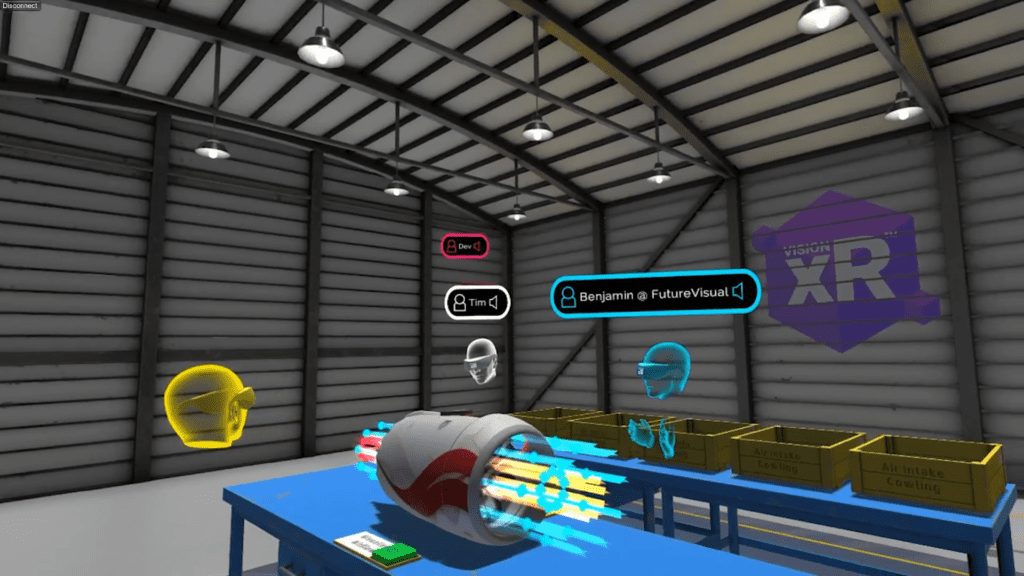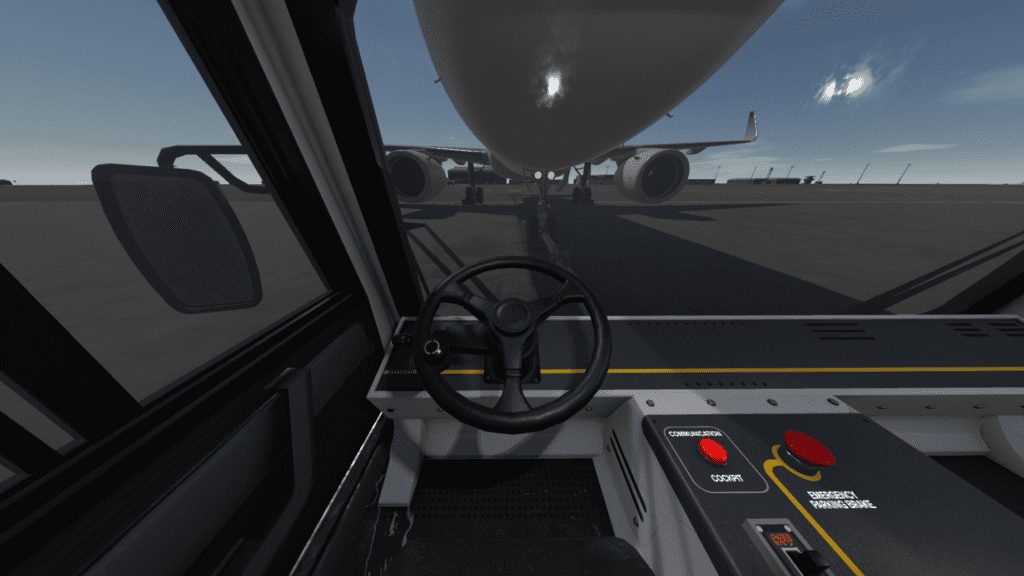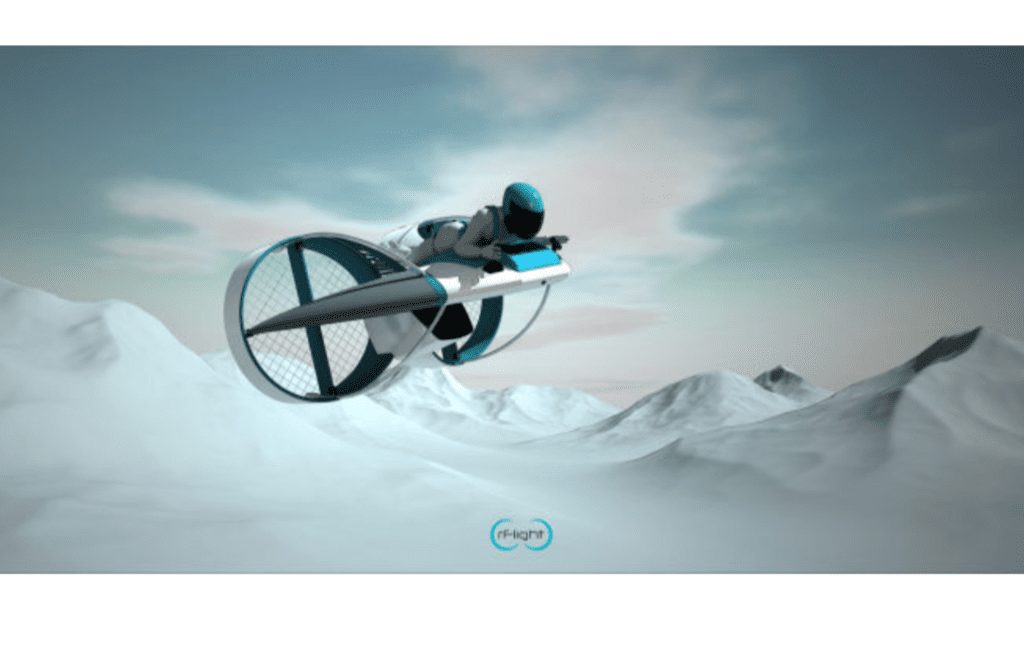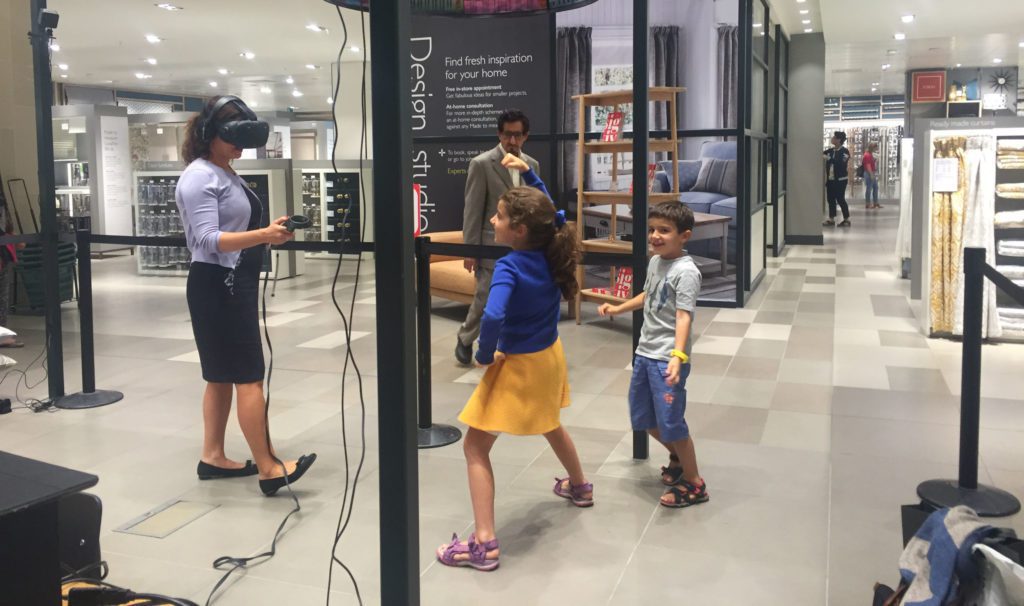Embracing new and emerging technologies has always been a key driver of change in business and the working world. During 2020, with the challenges of lockdown and restrictions on workplaces and on travel it has brought, businesses have adapted at lightning fast speed by changing working practices out of necessity. The long term business impact of Covid is yet to be fully realised, however it has reinforced the need to innovate to boost productivity, build customer bases and future proof businesses. And adopting immersive technologies such as virtual reality may hold the key to success.

The Opportunities for VR Tech in the Business World
But how can VR help businesses? As immersive hardware becomes more widely available and affordable, coupled with advances in software technology such as Future Visual’s VISIONxR™, VR has tangible and demonstrable business benefits, from helping to improve productivity, through to connecting with customers in new and unique ways, and ensuring that businesses are employing the right people, with the right skills. What’s more, it can help to reduce costs and improve a company’s environmental credentials.
5 Business Applications for Virtual Reality Technology
RECRUITMENT IN VR
According to the Open University’s Business Barometer Report (2019), more than two-thirds (68%) of UK employers struggle to find workers with the right skills. As businesses face the challenges of recruitment, VR can help to secure potential new employees who will be the perfect fit for the organisation.
For roles where remote working is a possibility, using VR as a tool for communication and collaborative working means that geography is no longer a barrier to recruitment. This means that the sky is literally the limit for the potential talent pool; it’s no longer about being the right person in the right place, but simply being the right person for the job.
You learn more about VR being used in recruitment in Future Visual’s BUILDING NEW REALITIES podcast: “Can Immersive programmes support the change coming for Employee Experience and Customer Experience?” with Belinda Gannaway.

VR TRAINING
Learning by doing is a tried and tested way of effectively training employees – and virtual reality takes this to the next level. VR training takes place in risk-free, virtual work spaces, where a variety of realistic scenarios give employees the chance to take a hands-on approach to hone their skills.
From highly intricate techniques required by trainee surgeons, through to procedural practices for field technicians or even soft skills training, VR training experiences facilitate practical learning. Collaborative training experiences are also possible, where interdependent team skills can be developed.
One of the key benefits of VR is that it addresses the paradox of roles where on the job training is crucial to carry out tasks correctly, however such training is difficult due to high risk or dangerous working conditions. Learners are able to repeat practical exercises safely, giving them the chance to build muscle memory. It also allows employees’ learning performance to be monitored and evaluated, to ensure their skills reach required standards and they can work proficiently prior to applying their skills in the real world.
You learn more about VR being used in training in Future Visual’s BUILDING NEW REALITIES podcast “How Aggreko is deploying immersive technology” with Walter Davis.
VR WORKSPACES FOR THE 21ST CENTURY
In 2020, a consequence of the Covid pandemic has been that profound changes in working environments have been felt keenly by millions of people around the world. These changes may prove to be a catalyst to existing long term working trends, where we are increasingly seeing employees working remotely, with home working becoming more prevalent, and teams spanning different countries from around the world.

For teams that no longer share a physical workplace, working together on projects can be challenging. VR provides a practical collaborative space for employees to work together effectively by removing physical barriers. For example, it is revolutionising the design process and workflows for R&D teams. Virtual prototyping means that 3D models can be shared by team members who are brought together in a common virtual space for simultaneous working, no matter where they are in the world. This can significantly improve and speed up prototyping, by bringing designs to digital life and allowing teams to collectively scrutinise every aspect in meticulous detail.

COMMUNICATIONS IN VR
For many, the perception of virtual reality is that it is a solitary activity, where the real world, including other people, is blocked out. But over the past few years, social VR experiences mean that virtual reality platforms offer a brilliant way to help businesses to communicate with internal teams, as well as clients and customers.
While Zoom and other teleconferencing services help to keep teams connected and businesses in touch with clients, social VR platforms such as Altspace can offer a practical alternative and address the limitations of 2D screen-based communications tools.
VR meetings are 3D in nature, replicating the feeling of being in the same space as fellow attendees. It allows attendees to act more naturally, for example looking around the room rather than just at the person speaking, as well as being able to pick up on non-verbal gestures. What’s more, environments can be changed to match the meeting agenda, from traditional boardrooms to more creative spaces such as meeting on the moon.
A key benefit of VR as a communications tool is that distractions are minimised. Businesses benefit from more productive and efficient meetings, as attendees are fully immersed into the meeting space, blocking out the physical world with the headset and headphones.
EXPERIENTIAL VR MARKETING

Standing out from the crowd by connecting with customers in new and exciting ways is the holy grail for any marketer. Virtual reality, mixed with creative imagination and utilising customer insights can help to supercharge a company’s marketing strategy. In-store VR installations such as Future Visual/John Lewis’ Design Project and Tom’s Virtual Giving Trip, highlight how virtual reality has the potential to create impactful customer connections through memorable and emotionally engaging content.
The Future of VR in Business
The VR/AR industry is predicted to grow to an $80bn market by 2025, as the introduction of kit such as Oculus Quest 2 paves the way for widespread adoption and has the potential to become a part of all our everyday lives.
As VR becomes more prevalent, the case for introducing virtual reality into businesses future corporate strategies is compelling. With the ongoing evolution of high performing, low cost hardware and software, the cost of adoption is balanced against the benefits of a highly trained and proficient workforce leading to increased productivity, lower operational costs and more effective ways of engaging with customers. So the question isn’t how your business could benefit from VR – but when your business will embrace the virtual world.
Interested in introducing virtual reality into your business? Future Visual is here to help! Contact us today to start your immersive journey by signing up for a demo at www.futurevisual.com/visionxr
Embracing new and emerging technologies has always been a key driver of change in business and the working world. During 2020, with the challenges of lockdown and restrictions on workplaces and on travel it has brought, businesses have adapted at lightning fast speed by changing working practices out of necessity. The long term business impact of Covid is yet to be fully realised, however it has reinforced the need to innovate to boost productivity, build customer bases and future proof businesses. And adopting immersive technologies such as virtual reality may hold the key to success.

The Opportunities for VR Tech in the Business World
But how can VR help businesses? As immersive hardware becomes more widely available and affordable, coupled with advances in software technology such as Future Visual’s VISIONxR™, VR has tangible and demonstrable business benefits, from helping to improve productivity, through to connecting with customers in new and unique ways, and ensuring that businesses are employing the right people, with the right skills. What’s more, it can help to reduce costs and improve a company’s environmental credentials.
5 Business Applications for Virtual Reality Technology
RECRUITMENT IN VR
According to the Open University’s Business Barometer Report (2019), more than two-thirds (68%) of UK employers struggle to find workers with the right skills. As businesses face the challenges of recruitment, VR can help to secure potential new employees who will be the perfect fit for the organisation.
For roles where remote working is a possibility, using VR as a tool for communication and collaborative working means that geography is no longer a barrier to recruitment. This means that the sky is literally the limit for the potential talent pool; it’s no longer about being the right person in the right place, but simply being the right person for the job.
You learn more about VR being used in recruitment in Future Visual’s BUILDING NEW REALITIES podcast: “Can Immersive programmes support the change coming for Employee Experience and Customer Experience?” with Belinda Gannaway.

VR TRAINING
Learning by doing is a tried and tested way of effectively training employees – and virtual reality takes this to the next level. VR training takes place in risk-free, virtual work spaces, where a variety of realistic scenarios give employees the chance to take a hands-on approach to hone their skills.
From highly intricate techniques required by trainee surgeons, through to procedural practices for field technicians or even soft skills training, VR training experiences facilitate practical learning. Collaborative training experiences are also possible, where interdependent team skills can be developed.
One of the key benefits of VR is that it addresses the paradox of roles where on the job training is crucial to carry out tasks correctly, however such training is difficult due to high risk or dangerous working conditions. Learners are able to repeat practical exercises safely, giving them the chance to build muscle memory. It also allows employees’ learning performance to be monitored and evaluated, to ensure their skills reach required standards and they can work proficiently prior to applying their skills in the real world.
You learn more about VR being used in training in Future Visual’s BUILDING NEW REALITIES podcast “How Aggreko is deploying immersive technology” with Walter Davis.
VR WORKSPACES FOR THE 21ST CENTURY
In 2020, a consequence of the Covid pandemic has been that profound changes in working environments have been felt keenly by millions of people around the world. These changes may prove to be a catalyst to existing long term working trends, where we are increasingly seeing employees working remotely, with home working becoming more prevalent, and teams spanning different countries from around the world.

For teams that no longer share a physical workplace, working together on projects can be challenging. VR provides a practical collaborative space for employees to work together effectively by removing physical barriers. For example, it is revolutionising the design process and workflows for R&D teams. Virtual prototyping means that 3D models can be shared by team members who are brought together in a common virtual space for simultaneous working, no matter where they are in the world. This can significantly improve and speed up prototyping, by bringing designs to digital life and allowing teams to collectively scrutinise every aspect in meticulous detail.

COMMUNICATIONS IN VR
For many, the perception of virtual reality is that it is a solitary activity, where the real world, including other people, is blocked out. But over the past few years, social VR experiences mean that virtual reality platforms offer a brilliant way to help businesses to communicate with internal teams, as well as clients and customers.
While Zoom and other teleconferencing services help to keep teams connected and businesses in touch with clients, social VR platforms such as Altspace can offer a practical alternative and address the limitations of 2D screen-based communications tools.
VR meetings are 3D in nature, replicating the feeling of being in the same space as fellow attendees. It allows attendees to act more naturally, for example looking around the room rather than just at the person speaking, as well as being able to pick up on non-verbal gestures. What’s more, environments can be changed to match the meeting agenda, from traditional boardrooms to more creative spaces such as meeting on the moon.
A key benefit of VR as a communications tool is that distractions are minimised. Businesses benefit from more productive and efficient meetings, as attendees are fully immersed into the meeting space, blocking out the physical world with the headset and headphones.
EXPERIENTIAL VR MARKETING

Standing out from the crowd by connecting with customers in new and exciting ways is the holy grail for any marketer. Virtual reality, mixed with creative imagination and utilising customer insights can help to supercharge a company’s marketing strategy. In-store VR installations such as Future Visual/John Lewis’ Design Project and Tom’s Virtual Giving Trip, highlight how virtual reality has the potential to create impactful customer connections through memorable and emotionally engaging content.
The Future of VR in Business
The VR/AR industry is predicted to grow to an $80bn market by 2025, as the introduction of kit such as Oculus Quest 2 paves the way for widespread adoption and has the potential to become a part of all our everyday lives.
As VR becomes more prevalent, the case for introducing virtual reality into businesses future corporate strategies is compelling. With the ongoing evolution of high performing, low cost hardware and software, the cost of adoption is balanced against the benefits of a highly trained and proficient workforce leading to increased productivity, lower operational costs and more effective ways of engaging with customers. So the question isn’t how your business could benefit from VR – but when your business will embrace the virtual world.
Interested in introducing virtual reality into your business? Future Visual is here to help! Contact us today to start your immersive journey by signing up for a demo at www.futurevisual.com/visionxr































